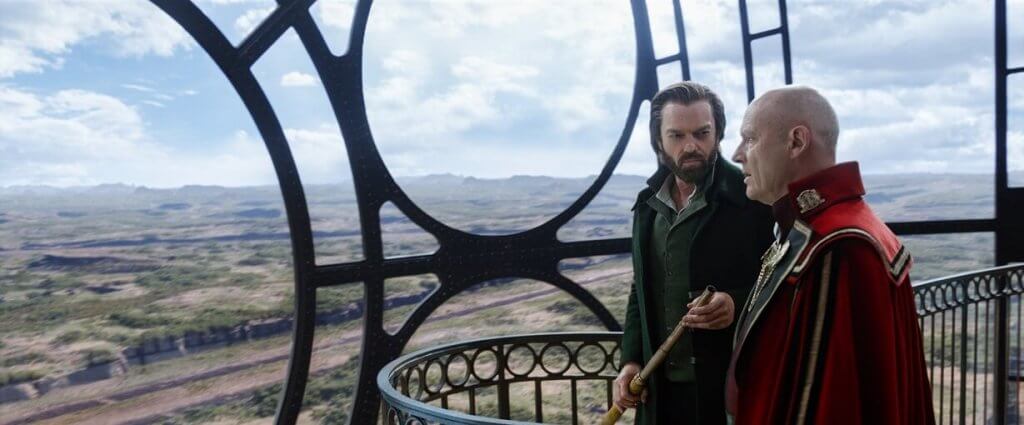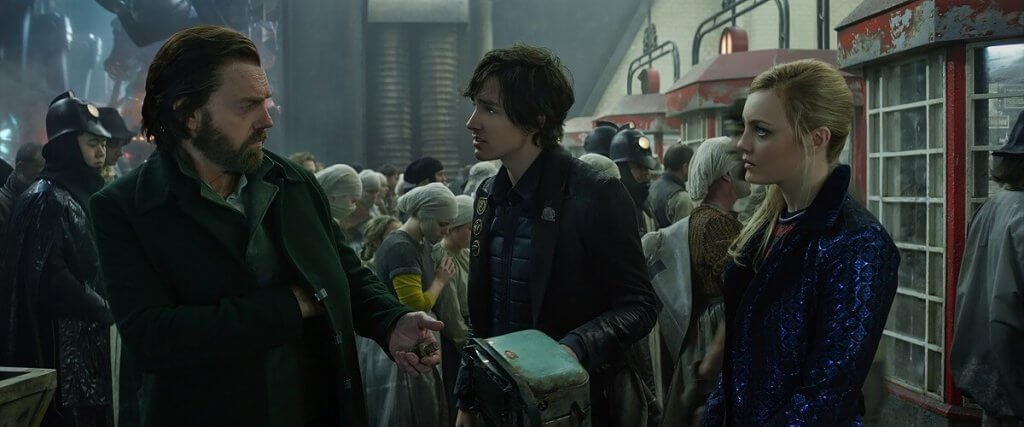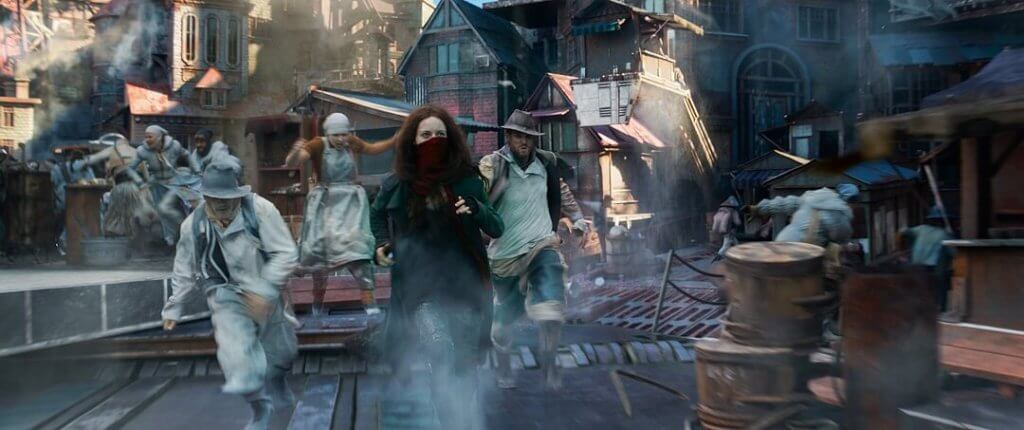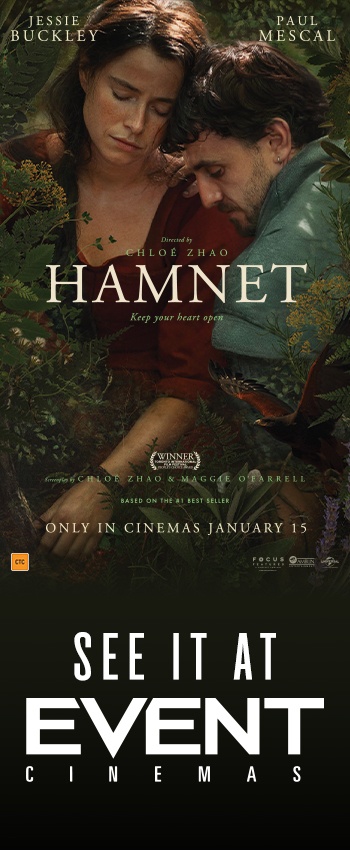Christian Rivers is a New Zealand storyboard artist, visual effects supervisor, special effects technician and director. He first met Peter Jackson as a 17-year-old and storyboarded all of Jackson’s films since Braindead. He made his directing debut for the film adaptation of Mortal Engines after working on the Splinter Unit directing on the Hobbit Trilogy and he won an Academy Award for Best Visual Effects on King Kong.
Hundreds of years after civilization was destroyed by a cataclysmic event, a mysterious young woman, Hester Shaw (Hera Hilmar), emerges as the only one who can stop London — now a giant, predator city on wheels — from devouring everything in its path. Feral, and fiercely driven by the memory of her mother, Hester joins forces with Tom Natsworthy (Robert Sheehan), an outcast from London, along with Anna Fang (Jihae), a dangerous outlaw with a bounty on her head.
MORTAL ENGINES opens in cinemas December 6 – you can either listen to the full interview below or read a part transcript.
Accessreel: You’re no stranger behind the camera working on like Lord of The Rings and unit director on Hobbit and Pete’s Dragon… when Peter Jackson comes to you and says you’re it for this one. What went through your head?
Christian: Terror, terror and terror and terror and sort of you know I remember reading the books going Oh yeah well that’s impossible. How is he going to do that? I look forward to seeing it and then when he rang up and asked me I thought shit should I say yes I’m gonna have to figure this out but you know it was no secret to him that I was sort of you know making paths to direct something I was trying to go through a more conventional approach and get a low budget feature film off the ground and when he when he called me it was it was a sort of a decision that rocked me for about 10 seconds and then I said yes if I want to be directing movies I can’t not say yes to this.

Accessreel: Well you know you sort of look at it as you’re now a one hundred million dollar plus budget director?
Christian: Yeah and hopefully the film goes well and then people go see it and its successful then you know I just feel like the luckiest person in the world really. I would have loved to have seen a film like this when I was growing, I’d love to see this movie like this fresh with fresh eyes now… that gets kind of what we wanted to do, we wanted to make something new and fresh and something that people and audiences haven’t seen before.
Accessreel: Within the first ten minutes of this film you sort of understand how big the scale of this film is and then obviously you have create this entire world that’s set 3000 years in the future. How do you prepare for this film?
Christian: First of all we knew pretty early on that we were going to have to create a lot of it with CGI, it was kind of a given and so it was a lengthy design process. We had a great concept design team and people that I’d worked with before and one of our Lead Concept designers Nick Keller who designed a of lot of the cities and then the Airship in the film he’s a wonderful concept illustrator but he also used to be an engineer so everything that he designs he has this real really sort of fundamental understanding of how you know how it might actually function. We just sort of had to imagine that our world was destroyed and then we you know we would dig through the ashes and sort of rebuild cities that it needed to move you know what pieces might they find because the books are very steampunk the books actually described and they’re very very steampunk and we knew we didn’t want to make steampunk movie or rely on that look for the film and so but we also wanted to honor some of the character of that and so for London especially we I mean I sort of took a line of thought that well you know we live in a digital age and nearly everything that we have now days is kept on our phones or on our laptops you know how we look how we treat this that and the other end of all that was to get wiped out no one would have any idea in a thousand years how we looked at those to sift through the ruins of London they would probably find a lot of the old bronze statues from the Victorian era and they had some kind of clue that that’s how people in the past used to dress and they would have reinterpreted that in some way. I mean it’s a real that’s a really specific thing but it was it was it was a justification for keeping some of that sort of steampunk sort of look that slightly retro or very retro sort of look to the film. From a design you know it’s just really trying to find a truth behind every design decision that we made, no matter how sort of intangible as long as we could trace it back to something we recognized but also from a lateral shooting logistic sort of standpoint I wanted to make sure that you know mainly for the actors but also for the integration of visual effects that I actually wanted to have you know a small piece of set for the actors to be on. Even if most of the shot was gonna be green screen and it was gonna be replaced with CGI. I wanted the actors to be on up you know on a rusty old Gantry with a railing and some pipes and a bit of steam so that they always actually had that that real tactile sort of an immediate world around them.

Accessreel: Well speaking of the sets because usually what I try and do is watch a little bit of B-Roll so I can get an idea of how the film was shot and I was actually quite impressed with the amount of practical you had I was expecting a lot more blue and green, so that was obviously a conscious decision that you guys made earlier to be more practical?
Christian: Yeah no it totally was a lot of that was sort of budgetary I mean we know a film like this should probably cost two hundred million dollars and we sort of made it for just over half that so you know a lot of that was it was it was it was practical in that sense but it was I also knew from day one that I wanted to make a story that was driven by the characters was focused on the characters and all the spectacle is peripheral to that and even the sort of big chase at the beginning with London chasing down the small park and then ingest it and you know it’s probably we opened with that spectacle but it’s completely introducing us to all these different characters that we’re going to follow along the way and in fact Tom’s the last character, the visual effects philosophy was always coming from character you know being driven by character. because of how light obviously had talents in the way that people are doing anything.

Accessreel: Is there anything that you took away from Peter Jackson watching him back in days on the Hobbit and Lord of The Rings that you brought to your directing style?
Christian: This whole film was me, I sort of joke with Pete at the end of the shoot .. you know it sort of broke me down and rebuilt me I said I’m a different person to who was six months ago you know and he sort of chuckled and said yeah you’re slightly damaged point but I think the main thing I learnt from Pete is his calmness on set it was very important and I saw how that the director you know this stress manifested itself into because you are always stressed you’re always scared and if that manifests itself in to losing your shirt or any kind of dysfunction it just had an immediate trickle-down effect and effects everyone and it’s just it’s just so negative. Pete never had that I mean he is amazingly calm and patient and generous and I think that’s kind of what I was well above anything that’s what I wanted to sort of emulate you know.
Accessreel: Thanks very much Christian good luck with the release. I hope it goes super well and we get to see more of this world.



